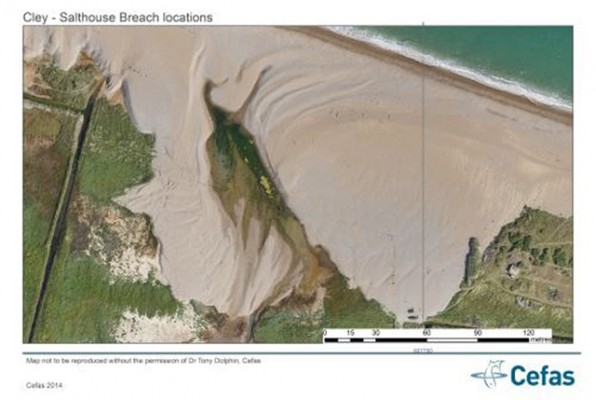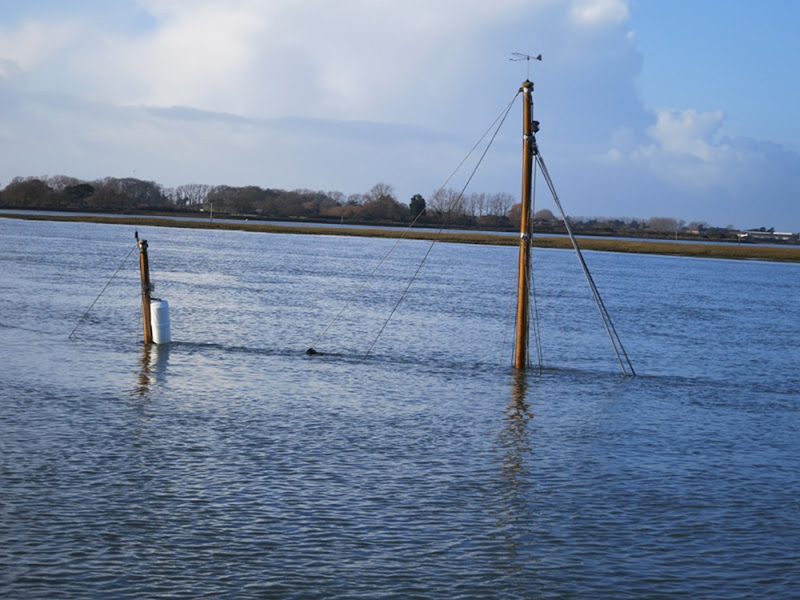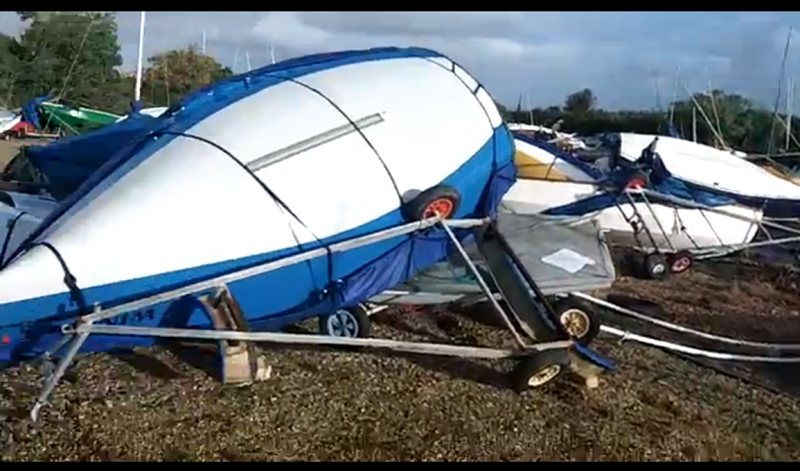One year on from the biggest UK storm surge for 60 years, new aerial photos have revealed details of breaches to coastal defences along the East Anglian coastline
One year on from the biggest UK storm surge for 60 years, new aerial photos have revealed details of breaches to the natural and man-made coastal defences on part of the East Anglian coastline.
Researchers from the Centre for Environment, Fisheries & Aquaculture Science (Cefas) and the University of East Anglia (UEA) are mapping selected areas hit by the surge on 5 December 2013.
Although damage to flood defences was much lower in 2013 than in 1953, there was still extensive change to the coastline, damage to seawalls, and saltwater flooding.
The work is part of a Natural Environment Research Council (NERC) funded short-term project to better understand the initial environmental and societal impacts caused by the 2013 storm surge and the resulting saltwater flooding. Such understanding is vital for developing improved responses to such events in the future and mitigating their impact.
Dr Trevor Tolhurst, lead scientist on the project and lecturer in UEA’s School of Environmental Sciences, said: ‘This project is a once in a lifetime opportunity to collect data to improve our understanding of the impacts of a severe natural event and investigate how these events are perceived and responded to.
‘Due to their rarity, our understanding of the impacts of these large storm surges on coastal habitats is poor. It is essential that such events are included in the investigation of future changes to our coasts and in the development of appropriate response strategies.’
The Cefas aerial mapping team, led by Dr Tony Dolphin, used their small Remote Piloted Aircraft to build very high resolution photo and topographic maps of parts of the North Norfolk coastline. These maps chart the storm surge breaches in the man-made coastal defences along the North Norfolk Coastal Path near Blakeney and breaches and sediment movement along the Cley – Salthouse gravel barrier.
Sediment was transported inland over 100 metres, in places infilling protected saline lagoon habitats.
Tony Dolphin, Coastal Scientist and RPA pilot at Cefas, said: ‘The RPA technique is ideal for mapping the physical breaches and sediment movement, as well as the impact on vegetation and habitats caused by the storm surge. Compared to traditional aerial photography, the RPA can be rapidly deployed following extreme events and provides higher resolution map products.
‘Using these images we should, for the first time, be able to calculate the amounts of sediment that move in these surges, the distances they move in a few hours, and possibly even the direction and velocity of the flows. Coastal managers need this information to better understand why certain areas might be vulnerable to flooding and how to mitigate the effects.
‘While data is still being processed and the projects findings won’t be published until later in 2015, the effects of the surge are already becoming clearer.’
Dr Tolhurst added: ‘There is a challenge in translating scientific knowledge into real-world decision-making. This project is engaging with local communities and coastal managers in North Norfolk and bodies such as the Environment Agency to better inform decision making.
‘The resulting strategies will, we hope, benefit the entire coastline of the country, its habitats and those living close to it, in the future. But this is just the first step and longer-term work is required to determine how the coastal environment and local populace recover from such extreme events.’
As part of the project an event was recently held Blakeney, bringing together local people, councillors, businesses, stakeholders and researchers to discuss the effects of the storm surge and the project’s findings to determine how research can help communities, and to provide further local information to inform the project.
Yachtsmen warned of navigational hazards following storms
The latest in a string of violent storms has left a trail of navigational hazards around damaged coastal regions
Surge in boat insurance claims following storms
Batten down the hatches - there's more extreme weather on its way!
Strong winds, rough seas and a storm surge
Weather warnings as an Atlantic storm brings a North Sea storm surge to parts of the UK
Warning to boat owners to secure vessels against storm
A major Atlantic storm is set to move across the UK over the next 24 hours
Leaving your boat in storms
Windy weekend - leave her safe and secure
Storms forecast – safeguard your vessel!
Insurers warn heavy rains can sink your boat










